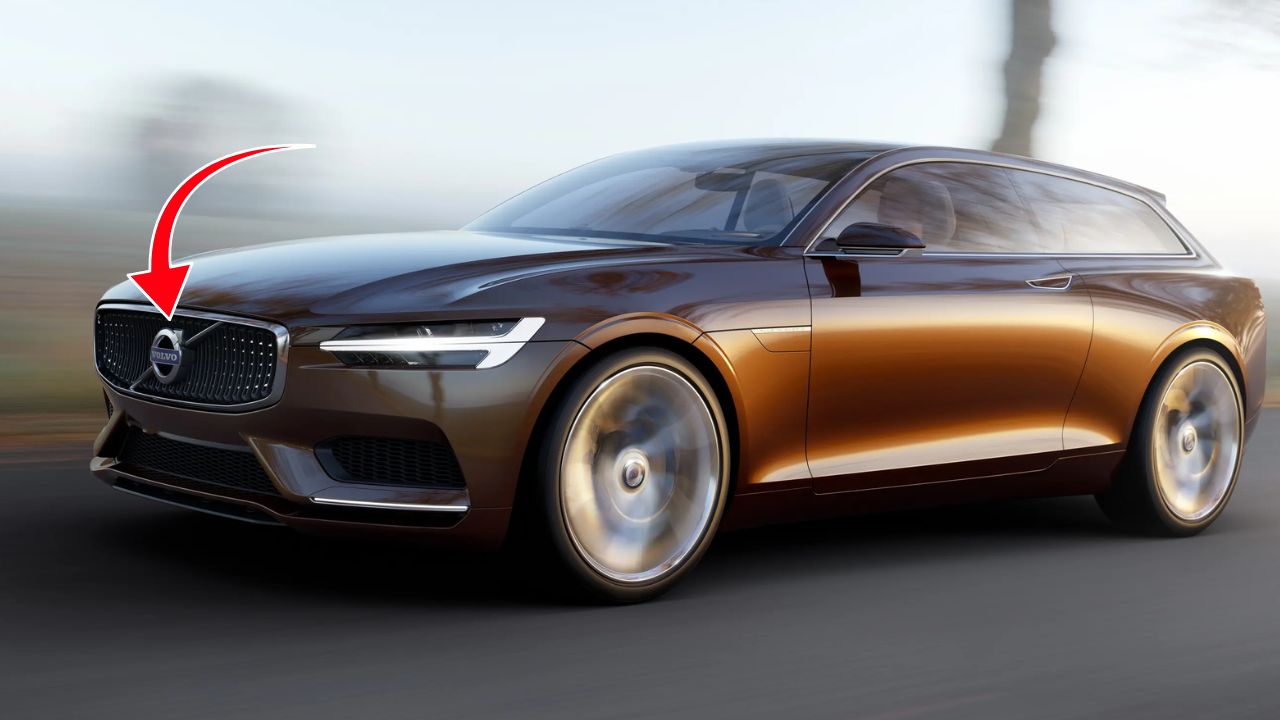The automotive industry stands on the brink of another safety revolution, and once again, Volvo leads the charge. The Swedish automaker, renowned for prioritizing human life above all else, has unveiled what many consider the most significant advancement in seatbelt technology since the invention of the three-point harness system in 1959. This time, they’re introducing the world’s first multi-adaptive safety belt, scheduled to debut in the all-electric Volvo EX60 crossover in 2026.
This isn’t just another incremental improvement to existing safety systems. We’re talking about a fundamental reimagining of how seatbelts protect occupants, utilizing artificial intelligence, advanced sensors, and real-time data analysis to provide personalized protection that adapts to each individual’s unique physical characteristics and the specific circumstances of any collision.
The Genesis of Smart Protection Technology
Building on a Legacy of Innovation
Volvo’s commitment to safety isn’t new. The company literally wrote the book on automotive safety when engineer Nils Bohlin invented the modern three-point seatbelt in 1959. What makes this story even more remarkable is that Volvo freely shared this life-saving patent with the entire automotive industry, prioritizing human welfare over corporate profits. That single decision has saved over one million lives worldwide, according to safety experts.
Now, sixty-seven years later, Volvo is once again pushing the boundaries of what’s possible in automotive protection. The multi-adaptive safety belt represents the culmination of over five decades of safety research, drawing from an extensive database containing information from more than 80,000 real-world accident victims.
The Technology Behind the Innovation
The new smart belt system operates on a sophisticated network of sensors positioned throughout the vehicle’s cabin and exterior. These sensors work in harmony to create a comprehensive understanding of each occupant’s physical characteristics, including height, weight, body shape, and seating position. But the system goes far beyond simple measurements.
When a collision occurs, the technology analyzes multiple variables simultaneously: the direction of impact, the speed at which it’s happening, the severity of the crash, and the precise posture of each occupant. All this data processing happens in less than the blink of an eye, allowing the system to select the most appropriate protection setting from eleven different load-limiting profiles.
How the Multi-Adaptive System Functions
Personalized Protection Algorithms
Traditional seatbelt systems operate with limited flexibility, typically offering just three load-limiting settings. Volvo’s revolutionary approach expands this to eleven distinct profiles, each calibrated for different scenarios and occupant characteristics. The system’s intelligence lies in its ability to make split-second decisions about which profile to deploy.
Consider this scenario: a larger passenger experiences a severe frontal collision. The smart belt system immediately recognizes the need for higher restraint forces to prevent the occupant’s head from striking the dashboard or steering wheel. Conversely, if a smaller, lighter passenger encounters a less severe impact, the system automatically reduces the restraint force to minimize the risk of rib fractures while still providing adequate protection.
Real-Time Data Integration
The multi-adaptive safety belt doesn’t operate in isolation. It forms part of a comprehensive safety ecosystem that includes airbags, occupant detection systems, and various driver assistance technologies. This integration ensures harmonized protection features that work together rather than independently.
The system continuously monitors traffic conditions and adjusts its preparedness accordingly. In heavy traffic or challenging weather conditions, the smart belt system remains in a heightened state of readiness, able to respond even more quickly if a collision becomes inevitable.
Partnership with ZF: Engineering Excellence
Collaborative Innovation
Volvo didn’t develop this groundbreaking technology alone. The company partnered with ZF, a leading German automotive supplier known for their expertise in safety systems and advanced engineering solutions. This collaboration brings together Volvo’s decades of safety research with ZF’s cutting-edge manufacturing capabilities and technical expertise.
The partnership ensures that the multi-adaptive safety belt meets the highest standards of reliability and performance. ZF’s involvement also means that the technology has been designed with scalability in mind, potentially making it available across Volvo’s entire vehicle lineup in the future.

Testing and Validation
Development and testing of the smart belt system took place at Volvo’s world-renowned Safety Centre, which celebrated its 25th anniversary in 2024. This facility allows engineers to recreate virtually any type of traffic accident and conduct tests that exceed regulatory requirements.
The testing process involved thousands of simulated crashes, each designed to validate the system’s ability to make the right protection decisions under various circumstances. The engineers paid particular attention to edge cases and unusual scenarios to ensure the technology performs reliably in real-world conditions.
The EX60: First Implementation of Smart Belt Technology
Electric Innovation Meets Safety Excellence
The Volvo EX60, scheduled for release in 2026, represents more than just another electric vehicle launch. This fully electric crossover serves as the debut platform for the multi-adaptive safety belt technology, showcasing how Volvo integrates cutting-edge safety features with sustainable mobility solutions.
The choice to introduce this technology in an electric vehicle isn’t coincidental. Electric vehicles offer unique opportunities for safety innovation due to their different weight distribution, lower center of gravity, and advanced electrical architectures that can support sophisticated sensor networks and rapid data processing.
Beyond the EX60: Future Implementation
While the EX60 will be the first vehicle to feature the multi-adaptive safety belt, Volvo has indicated that this technology will likely expand across their entire vehicle lineup. The company’s commitment to democratizing safety innovations means that this life-saving technology won’t remain exclusive to premium models for long.
Industry analysts expect that within five years of the EX60’s launch, most new Volvo vehicles will feature some version of this adaptive safety technology, possibly with enhancements and improvements based on real-world performance data.
Artificial Intelligence in Automotive Safety
Machine Learning and Continuous Improvement
One of the most exciting aspects of Volvo’s smart belt technology is its capacity for continuous improvement through artificial intelligence and machine learning algorithms. The system doesn’t just rely on pre-programmed responses; it learns from every interaction and can refine its decision-making processes over time.
The AI component analyzes patterns in crash data, occupant behavior, and system performance to identify opportunities for enhancement. This means that the protection offered by the smart belt system will actually improve as more vehicles equipped with the technology enter service and begin sharing anonymized performance data.
Over-the-Air Updates
Like many modern automotive systems, the multi-adaptive safety belt can receive updates through over-the-air software downloads. This capability ensures that all vehicles equipped with the technology can benefit from the latest improvements and refinements without requiring visits to service centers.
These updates might include new protection algorithms developed through ongoing research, enhanced sensor calibration based on real-world performance data, or improved integration with other vehicle safety systems.
Impact on the Automotive Industry
Setting New Safety Standards
Volvo’s introduction of multi-adaptive safety belt technology is likely to influence safety standards throughout the automotive industry. As with the original three-point seatbelt, other manufacturers will need to respond to this innovation to remain competitive in the safety arena.
The technology demonstrates how traditional safety systems can be enhanced through the application of modern sensors, artificial intelligence, and data analytics. This approach could serve as a template for upgrading other safety features, from airbag systems to crumple zone designs.
Regulatory Implications
Safety regulators around the world are closely watching Volvo’s smart belt development. While current regulations don’t require adaptive safety systems, the proven effectiveness of this technology could lead to new standards that encourage or mandate similar innovations.
The extensive testing and validation process that Volvo has undertaken provides regulators with the data they need to understand the benefits and potential requirements for adaptive safety technologies.
Looking Toward a Safer Future
Vision Zero Implementation
Volvo’s multi-adaptive safety belt represents another step toward the company’s Vision Zero goal: the elimination of serious injuries and fatalities in new Volvo vehicles. This ambitious objective drives continuous innovation in safety technology and reflects the company’s fundamental belief that no one should be seriously injured or killed in a traffic accident.
The smart belt technology addresses one of the key challenges in achieving Vision Zero: the fact that traditional safety systems can’t account for the vast differences in occupant characteristics and crash scenarios. By personalizing protection for each individual and situation, Volvo moves closer to truly universal safety.
Industry-Wide Transformation
As this technology matures and becomes more widespread, it could fundamentally change how we think about automotive safety. Instead of one-size-fits-all protection systems, the future may hold completely personalized safety environments that adapt not just to occupant characteristics but also to driving conditions, weather, and even individual health conditions.
The implications extend beyond automotive applications. The principles behind Volvo’s smart belt technology could influence safety system design in other transportation modes, from aircraft to public transportation systems.
Frequently Asked Questions
Q: How much will the smart belt technology add to the cost of a Volvo vehicle?
Volvo hasn’t released specific pricing information for the multi-adaptive safety belt technology. However, given the company’s history of making safety innovations standard across their lineup rather than optional extras, it’s likely that this technology will be included as standard equipment in vehicles that feature it, rather than as a costly option.
Q: Can the smart belt technology be retrofitted to existing Volvo vehicles?
Unfortunately, the multi-adaptive safety belt system cannot be retrofitted to existing vehicles. The technology requires extensive integration with the vehicle’s sensor network, electrical architecture, and safety systems that must be built into the vehicle from the factory. The system’s complexity and the need for precise calibration make aftermarket installation impractical and potentially unsafe.
Q: Will other automakers have access to this technology like they did with the original three-point seatbelt?
While Volvo shared the three-point seatbelt patent freely in 1959, the company hasn’t announced similar plans for the multi-adaptive safety belt technology. However, given Volvo’s historical commitment to automotive safety and their stated goal of eliminating traffic fatalities, it’s possible that they may eventually share certain aspects of this technology with other manufacturers to maximize its life-saving potential across the industry.

